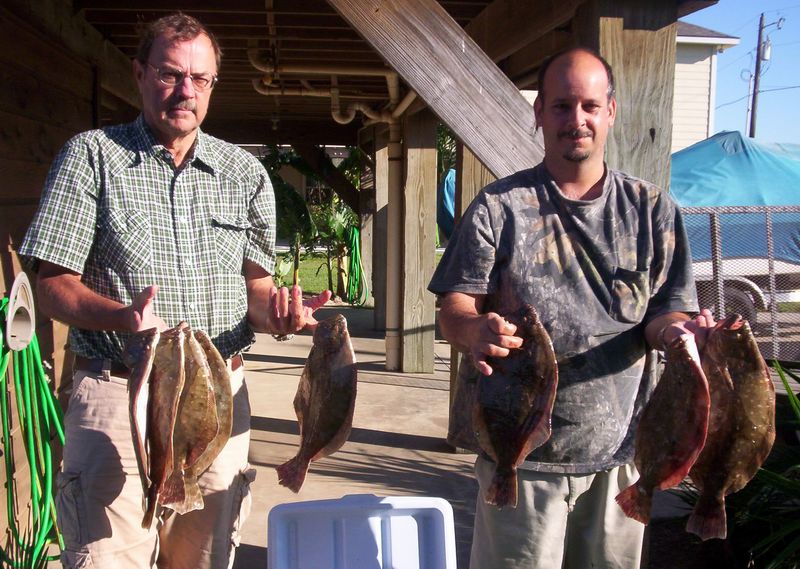Although many flounder are taken by rod and reel, “floundering” or gigging offers the best challenge for this Gulf species. The flounder’s habit of entering the shallow waters at night to feed makes the flatfish vulnerable to thin-water giging. Flounder fishing is best during the Gulfward migration from October through December. During this time, lanterns and spotlights can be seen in and around the pass areas as anglers wade through the shallows in search of the elusive flounder.
Gigs ranging from single-pronged to modified hay forks are often used to spear the fish. The fishermen wade quietly along the shallows looking for flounder lying flat on the bottom. Once the flounder is within the light from the lantern, normally it will not move, allowing the fisherman a chance to “gig” the fish. Although this sounds like a sure-fire method, many fish are missed because they go undetected until they swim away or because of inaccurate gigging by an over-anxious fisherman.
The more sophisticated flounder fisherman may mount his lantern on the front of a flat-bottomed boat. The skiff is then poled through the water in search of good eating flatfish. Floundering from a boat is much easier than wading and it also allows the fishermen to cover more area. Boats also allow floundering in areas where the bottom is too soft for wading.
The real trick to successful floundering along the Texas Gulf Coast is knowing when, rather than where to go. Many miles of Texas’ shores contain good floundering waters, but it is difficult to gig them if you can’t see them. The very best time to flounder is the days following a cold front. Not only does the colder weather push bait from the marshes bordering the coast, but it means that sediments will settle out and the water will be clear.
